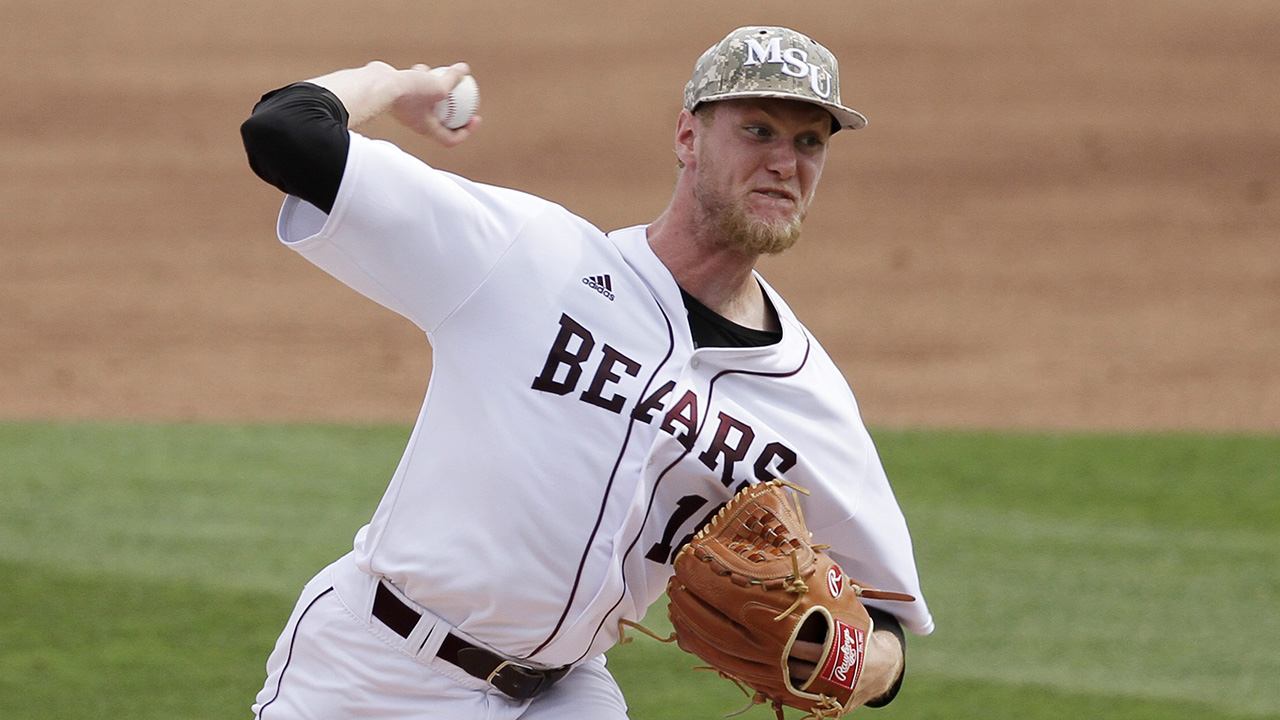TORONTO — Jon Harris didn’t care much for the Netflix tastes of his part-time roommate last year. Shows like American Horror Story, Shameless and Californication populate the ‘My List’ section of Harris’s account.
Sean Reid-Foley, on the other hand, had different taste in TV.
“He’d be sitting there looking at the screen and I’m like, ‘Dude what are you watching,’” Harris recalls. “He’s getting into details and I’m like, ‘Dude I don’t want to know.’ But that’s him. He’s unique in a certain way and I’m unique in a certain way.”
“I let Jon do whatever he wants,” Reid-Foley retorts with a smile. “At the end of the day, we’re all our own people.”
Despite their streaming differences, the right-handers grew close in 2017 as teammates with the Toronto Blue Jays’ double-A affiliate. Whenever the New Hampshire Fisher Cats embarked on a road trip, Harris and Reid-Foley would room together. Away from the diamond, they’d go out for meals, chatting about life and philosophy. Rarely did baseball come up in those conversations.
Harris, 24, and 22-year-old Reid-Foley entered the campaign as rising prospects, but their stocks tumbled throughout a 2017 ripe with individual struggle. You could forgive them for obsessing over mound troubles while in each other’s company, yet they made a conscious effort not to do so.
“We all have to have our little outs to clear our head and come back to the realization of being a human being and having a normal life,” said Harris this past weekend at Rogers Centre during the Blue Jays’ Winter Fest.
The Missouri native was drafted in the first round (29th overall) in 2015 and excelled the following year in A-ball, posting a combined 2.71 ERA across 129.2 innings during stops at Lansing and Dunedin. Harris’s 2017 was a different story: his ERA ballooned to 5.41 over 143 innings in double-A.
“It was more or less a learning year,” said the slender, six-foot-four right-hander. “Kind of a roller-coaster ride.”
Harris says several factors accounted for his regression. For one, he became too predictable with his pitch sequencing and didn’t throw his change-up enough. He also features a two-seam fastball, slider and curve in his repertoire and believes he was generally in the strike zone “too much.” That produced a drastic spike in his opponents’ batting average, which climbed from .229 in the prior campaign to .292 last year.
Around the midpoint of the season, with the help of New Hampshire pitching coach Vince Horsman and Blue Jays pitching coordinator Jeff Ware, Harris identified a bad habit that developed in his mechanics — when he raised his hands above his head, he was doing a poor job of hiding the ball from opposing hitters. With that corrected, Harris spent the second half getting comfortable with the change and sported a 4.66 ERA over his final 11 starts.
Perhaps the biggest reason for his setback, though, was his inability to adjust to the higher level of competition in double-A.
“It was a big learning curve,” Harris admits. “Guys are out there swinging the bat and you make mistakes and you get hurt. I found that out throughout the entire season.”
Reid-Foley also describes the year as a learning experience with “lot of ups and downs.” Like Harris, the right-hander pitched well in Lansing and Dunedin in 2016, but his numbers took a major dip in 2017 (5.09 ERA, 1.492 WHIP, 132.2 innings).
The second-round pick of the 2014 MLB Draft says he spent the majority of the season trying to be perfect, aware that a potential promotion to the big leagues was on the horizon.
“I got away from who I am as a pitcher,” he said. “You can’t go out there naked, as people would say, on the mound. That’s kind of what I was doing.
“When I look back at it now,” he added, “maybe I needed this year to figure out myself and figure out what I needed to get better at.”
The Blue Jays are exercising patience with the pair, who just one season ago were among the top 10 prospects in the organization, according to Baseball America.
“Both Sean and Jon are talented pitchers,” said Gil Kim, the club’s director of player development. “Making the jump to double-A: If you ask a lot of players and coaches, it’s a challenging level of minor-league baseball. As someone’s career progresses, there are going to be ups and downs. From a developmental standpoint, you could argue that they actually had a lot there to learn from as well.”
Kim highlights the duo’s strong work ethic and wants to see them build up their physical strength heading into 2018. A major key for both, he says, will be improving fastball command.
The club hasn’t yet decided where Harris and Reid-Foley will begin the season, but it’s possible they’ll be asked to give double-A another try.
Nevertheless, wherever they end up, it’ll be interesting to see if the pitchers’ Netflix tastes can converge at some point.
[relatedlinks]









